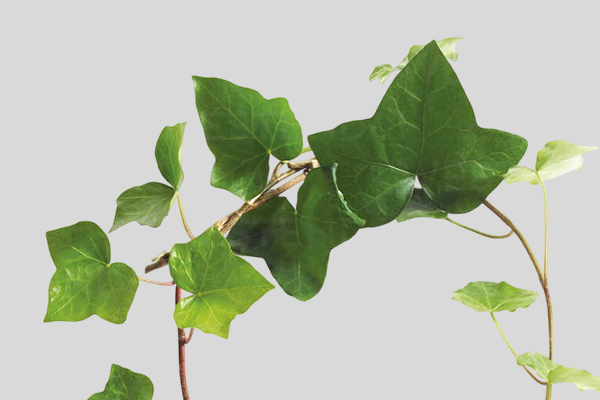
Hedera
Hedera, or common ivy, is one of the most popular indoor climbing plants. Its native regions are the subtropical zones of Southern Europe and Northern Africa, where it thrives in shade. Ivy is valued for its decorative appeal and low maintenance, making it a perfect choice for homes and offices. It also improves air quality by absorbing ammonia and formaldehyde, reducing mold spores and dust particles — especially beneficial for allergy sufferers and families with children.
Placement
Ivy prefers bright but indirect light. East- and west-facing windows are ideal. On north-facing windows it grows more slowly but remains healthy. Variegated varieties need more light to keep their patterns. Direct sunlight should be avoided as it can burn the leaves. Ivy can be grown in hanging baskets or trained on supports for vertical greening.
Watering
Water moderately and consistently. Keep the soil slightly moist but not soggy. In summer, water 2–3 times a week; in winter, about once every 7–10 days. Overwatering causes root rot. Use soft, room-temperature water. Ivy also benefits from misting, which increases humidity and refreshes the leaves.
Fertilizing
During spring and summer, feed ivy every 2 weeks with a fertilizer for foliage plants. Stop feeding in winter when growth slows. Overfeeding, especially in low light, makes the shoots leggy and the leaves pale. It’s better to use half the recommended dose.
Repotting
Young plants should be repotted annually in spring. Mature ivy needs repotting every 2–3 years, with the topsoil replaced each season. Choose a wide, stable pot, as ivy grows fast and becomes heavy. Soil should be fertile with added compost and sand (pH 6.5–7.5). A drainage layer is essential.
Temperature
The ideal temperature for ivy is +18…+22 °C. In summer, it grows well outdoors in shaded areas. In winter, cooler conditions (+12…+15 °C) help maintain its decorative foliage. At temperatures above +25 °C, leaves may yellow and dry out. Ivy in pots is not frost-hardy.
Pruning
Pruning is necessary to maintain a dense crown and control vine length. It is best done in spring and summer. Trim long shoots to encourage branching and remove weak or dry leaves. Ivy also tolerates heavy pruning and quickly produces new growth.
Conclusion
Hedera (ivy) is a versatile plant for homes and offices. It decorates interiors with cascades of greenery and works well for vertical gardening. Ivy requires indirect light, moderate watering, seasonal feeding, occasional repotting, proper temperature, and light pruning. With the right care, it will stay lush and healthy for years. ⚠️ Note: ivy is toxic to pets (cats and dogs) and may cause poisoning if ingested.
